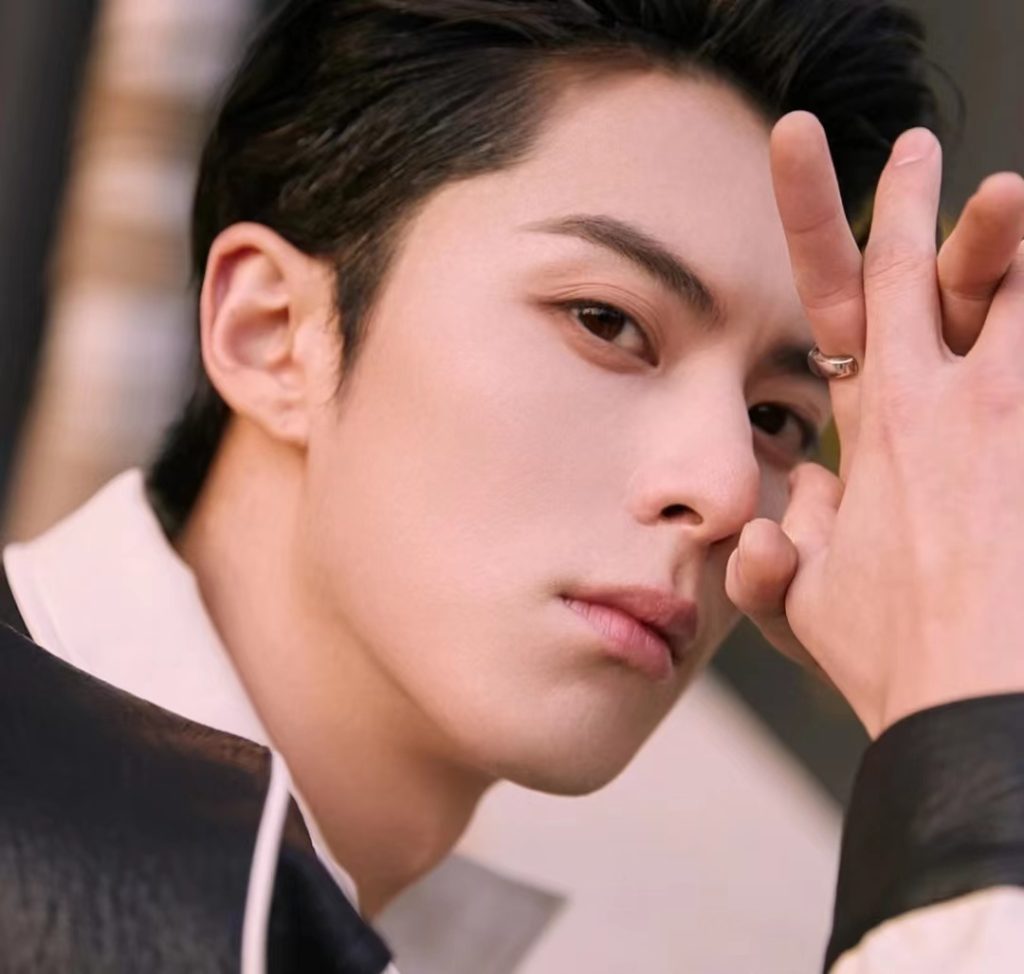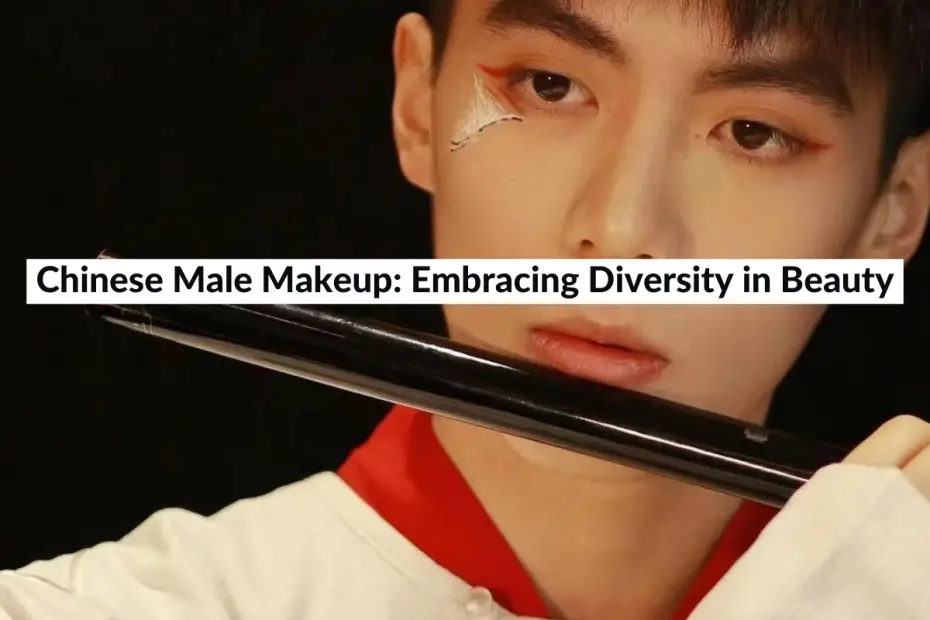Male makeup has gained significant popularity in China, with one in five Chinese men born after 1995 regularly using products like BB cream and lipstick. The male beauty market has experienced substantial growth, with sales of products such as men’s eyebrow pencil, men’s lipstick, and men’s BB cream increasing significantly.
The trend extends to even younger generations, with post-2000 boys investing in anti-aging products. Unlike in the West, where male makeup is often associated with gay culture, in China, it is seen as a tool for personal growth and empowerment.
Chinese men believe that makeup can enhance their attractiveness and provide more opportunities in life. Premium brands have capitalized on this trend by collaborating with influential figures and leveraging campaigns that emphasize personal development and success.
In this article, we will explore the fascinating world of Chinese male makeup, its growing popularity, its tradition and reasons behind.
Traditional Chinese Male Makeup
| Dynasty | Men’s Makeup Features |
|---|---|
| Qin and Han Dynasties | Elaboration of hair ornaments and clothing; complex and diverse hair-binding rituals to indicate status and rank; use of makeup by male civil servants going to court. |
| Wei and Jin Dynasties | Powdering with rice powder and lead powder; internal and external medication for fair skin; use of incense on clothes; prevalent use of makeup among upper-class scholars; pursuit of physical perfection; emphasis on fair face, lean physique, and tall body as aesthetic standards. |
| Tang Dynasty | Use of “kouzhi” (lip balm) in a tube-shaped form for moisturizing the lips; lip balm given as a token of appreciation by the emperor to officials; men’s lip balm generally transparent and not colored. |
| Song Dynasty | Wearing “zan hua” (flower pins) as decorative ornaments in the hair, sideburns, or crowns; a ritual system where officials and guards wore flower pins during ceremonies, festivals, or imperial trips; association of flower pins with good fortune, expelling diseases, warding off evil spirits, and symbolizing good luck; specific flowers like peach, lotus, chrysanthemum, and plum worn according to the seasons. |
| Ming Dynasty | Emphasis on hair care and cleanliness; tying up hair and wearing net scarves to keep hair flat; skincare routines performed in the morning and before bed; attention to overall image management; preference for dark hair and clean faces; proper placement of beards; pursuit of refined, ebullient, and neutral aesthetics; increasing diversification of male image in the public eye. |
Please note that this table provides a concise overview of the information regarding men’s makeup during each dynasty.
The actual practices and variations within each period were more extensive and detailed.
How To Do Traditional Chinese Male Makeup?
- Apply rice powder to the face: During the Wei and Jin dynasties, it was common to apply rice powder to achieve a pale complexion. This involved using rice powder as a facial powder to create a smooth and matte finish on the skin.
- Use fingertips to apply red pigment as eyeshadow: A technique used during that time involved using fingertips to apply red pigment, often made from cinnabar, as eyeshadow. This created a soft and subtle red hue on the eyelids.
- Emphasis on eyebrow makeup rather than eye makeup: In ancient China, particularly during the Wei and Jin dynasties, eyebrow makeup received more attention compared to eye makeup. Most often, only upper eyeliner was applied to make the eyes appear larger and elongated, while keeping the overall eye makeup minimal.
- Use a water and graphite mixture to draw eyebrows: To shape and define the eyebrows, a mixture of water and graphite, a type of carbon-based mineral, was used. This mixture was applied to draw the eyebrows, giving them a distinct and defined look.
- Apply lip color using lip paper: Lip color was often achieved by using lip paper. Lip paper, similar to modern-day lip patches or stains, was coated with a tinted pigment and applied to the lips to create a desired color. This technique allowed for precise application and a long-lasting effect.
These steps reflect some historical practices of makeup during the Wei and Jin dynasties.
And you will see this type of Chinese Men Makeup on Danmei.Who is the Male Makeup Influencer in China?
One prominent male makeup influencer in China is Li Jiaqi, also known as Austin Li. Li Jiaqi gained popularity through his live-streaming platform and became known as the “Lipstick King” for his expertise and captivating demonstrations of various lipstick shades.
He has a large following on social media platforms and has collaborated with numerous beauty brands. Li Jiaqi’s influence in the male makeup industry has helped to break gender norms and promote inclusivity in the beauty community in China.
Why do Chinese Men Wear Makeup?

Chinese men wearing makeup is a cultural phenomenon that has been practiced for centuries in China. The reasons for this practice can be attributed to various factors, including historical, cultural, and social influences. Here are a few possible reasons:
- Historical traditions: Makeup has a long history in China, dating back thousands of years. In ancient times, both men and women used cosmetics as a form of self-expression, to enhance their appearance, and as a symbol of social status.
- Traditional theatrical performances: Traditional Chinese opera and other theatrical forms often involve elaborate makeup and costumes. Male actors wear makeup to portray different characters, express emotions, and highlight specific facial features to make their performances more engaging.
- Pop culture and entertainment: With the rise of popular culture, especially in the entertainment industry, makeup has become more mainstream for both men and women. Male celebrities, such as actors, singers, and influencers, often wear makeup as part of their public image and to enhance their looks for performances or public appearances.
- Gender fluidity and self-expression: In recent years, there has been a growing acceptance and celebration of gender fluidity and individuality in Chinese society. Makeup has become a means for men to express themselves creatively, challenge traditional gender norms, and experiment with different looks.
- Skincare and grooming: The use of makeup products among Chinese men can also be related to skincare and grooming. Many cosmetic products, such as BB creams, tinted moisturizers, and concealers, offer skincare benefits along with coverage. Men may use these products to improve their skin’s appearance, cover blemishes, or even out their skin tone.
FAQs:
Yes, Chinese men can certainly wear makeup. In fact, makeup has become increasingly popular among Chinese men in recent years. It is no longer limited to women as societal attitudes towards gender and beauty continue to evolve.
Natural and subtle look: Many Chinese men opt for a natural and subtle makeup look to enhance their features without appearing heavily made up. This typically involves using light foundation or tinted moisturizers to even out the skin tone, grooming eyebrows, and adding a touch of natural-looking lip color. The emphasis is on creating a fresh and flawless appearance.
Soft and defined eyes: Eye makeup is a common focus for many Chinese men. Soft, defined eyes are achieved through techniques like using neutral eyeshadow shades, subtle eyeliner, and mascara to enhance the lashes. The goal is to create depth and highlight the eyes without looking overly dramatic.
Groomed and shaped brows: Well-groomed eyebrows are crucial for a polished look. Chinese men often shape their brows to suit their face shape and fill in any sparse areas using brow pencils or gels. This helps to frame the face and adds definition to the overall appearance.
BB creams or tinted moisturizers: BB creams and tinted moisturizers are popular choices for Chinese men as they provide light coverage and help even out the skin tone without appearing heavy or cakey. These products often have additional benefits such as sun protection and skincare ingredients.
Concealers: Concealers are used to cover blemishes, dark circles, or any other imperfections on the skin. Chinese men may use concealers to achieve a more flawless complexion or to create a natural-looking base before applying other makeup products.
Lip balms or lip tints: Chinese men often use lip balms or lip tints to add a touch of color and moisture to their lips. These products provide a subtle and natural-looking enhancement to the lips without the appearance of wearing traditional lipstick.


